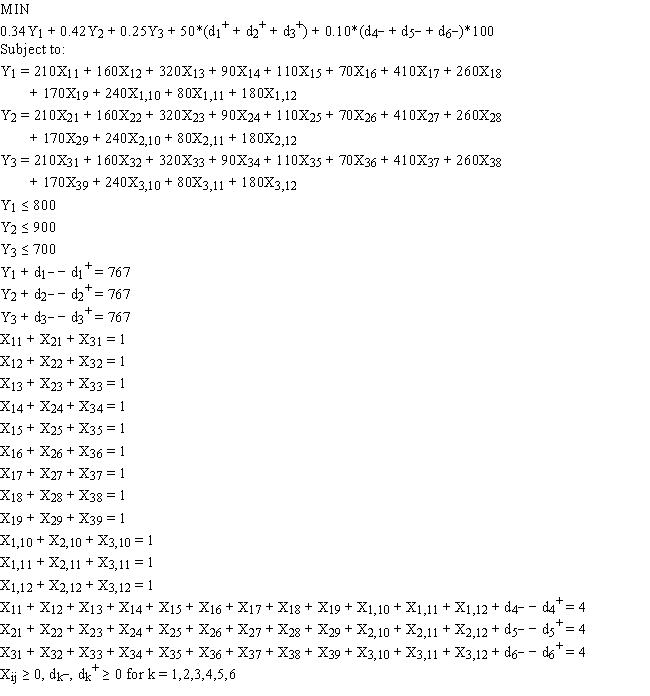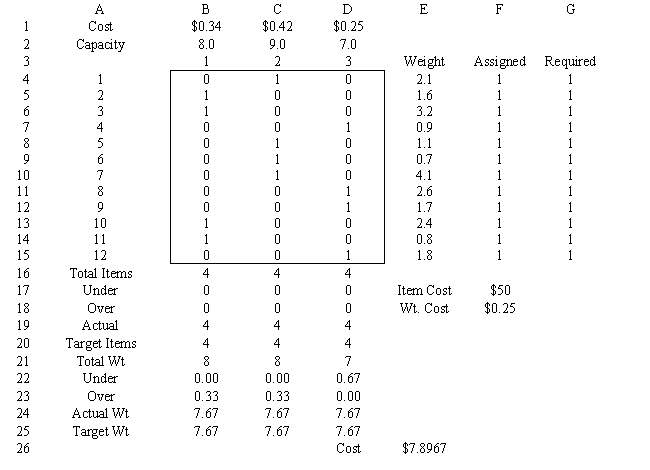Exhibit 7.4
The following questions are based on the problem below.
Robert Gardner runs a small, local-only delivery service. His fleet consists of three smaller panel trucks. He recently accepted a contract to deliver 12 shipping boxes of goods for delivery to 12 different customers. The box weights are: 210, 160, 320, 90, 110, 70, 410, 260, 170, 240, 80 and 180 for boxes 1 through 12, respectively. Since each truck differs each truck has different load capacities as given below:  Robert would like each truck equally loaded, both in terms of number of boxes and in terms of total weight, while minimizing his shipping costs. Assume a cost of $50 per item for trucks carrying extra boxes and $0.10 per pound cost for trucks carrying less weight.
Robert would like each truck equally loaded, both in terms of number of boxes and in terms of total weight, while minimizing his shipping costs. Assume a cost of $50 per item for trucks carrying extra boxes and $0.10 per pound cost for trucks carrying less weight.
The following integer goal programming formulation applies to his problem.
Y1 = weight loaded in truck 1; Y2 = weight loaded in truck 2; Y3 = weight loaded in truck 3;
Xi,j = 0 if truck i not loaded with box j; 1 if truck i loaded with box j.  Given the following spreadsheet solution of this integer goal programming formulation, answer the following questions.
Given the following spreadsheet solution of this integer goal programming formulation, answer the following questions. 
-Refer to Exhibit 7.4. The solution indicates Truck 3 is under the target weight by 67 pounds. What if anything can be done to this model to provide a solution in which Truck 3 is closer to the target weight?
Definitions:
Vocabulary Explosion
A rapid increase in the number of words a child learns and uses, commonly observed between the ages of two and three.
Naming
The act or process of providing a name to a person, place, thing, or concept.
Cognitive
Relating to mental processes involved in knowledge, understanding, learning, and decision-making.
Object
A material thing that can be seen and touched.
Q10: The concept behind neural networks is to<br>A)
Q22: Solve the following LP problem graphically by
Q23: Solve the following LP problem graphically using
Q35: A company wants to locate a new
Q39: Which of the following is not an
Q44: The sensitivity analysis provides information about which
Q75: A company must invest in project 1
Q83: A company has collected the following inventory
Q84: Refer to Exhibit 10.4. Compute the discriminant
Q84: A construction company just purchased a 300